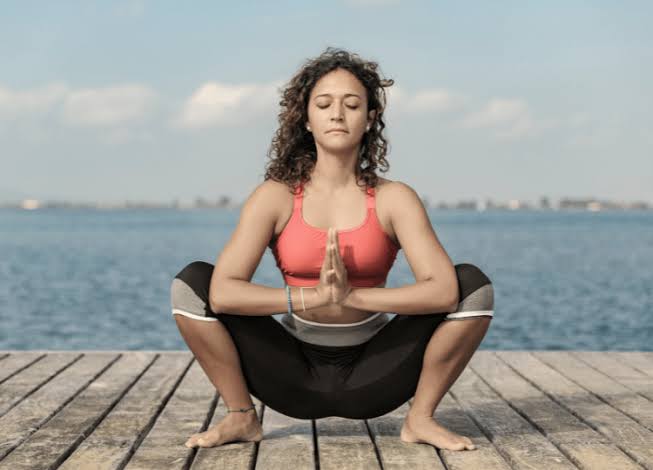ASIAN SQUAT
Fitness freaks and people who care about their health have been rediscovering ancient exercises and motions from many civilizations in recent years. Asian squat exercises are one such method that is becoming more popular. This unusual workout, which has its roots in Asian cultures where squatting is a fundamental aspect of daily living, mixes heritage with contemporary fitness techniques to enhance strength, flexibility, and general wellbeing. The fundamentals of the Asian squat exercise, its advantages, and how to use it in your fitness programme are all covered in this article.
Knowledge of the Asian Squat:
The Asian squat, sometimes referred to as the Asian squatting position, involves squatting with the buttocks near to the heels and the heels on the ground. In many Asian nations, people squat naturally while engaging in a variety of activities. It is a frequent position for resting and socialising. Using this posture as a workout can have a lot of benefits that go beyond those of regular exercise.
The Asian squat demands flexibility and repetition to master. The following instructions will help you adopt the posture:
1. Warm-up: Your hips, ankles, and lower back need to be warmed up before performing the Asian squat. To loosen up the joints, perform some mild stretches like hip circles and ankle rotations.
2. Find Your Position: Your feet should be somewhat broader than shoulder width apart as you stand. The angle between the tips of your toes and the floor should be between 30 and 45 degrees.
3. Kneel Down: Start by lowering your body towards the ground while bending your knees. Keep your core tight, chest up, and back straight as you drop. Put yourself in the position of reclining in an invisible chair.
4. Heels on the Ground: As you continue to lower your body, gradually move your weight to your heels. Your heels should remain flat on the floor the entire time you are squatting. Use a tiny elevation, such as a wedge or a towel rolled up, beneath your heels for support if you have trouble keeping your heels down.
5. Intensify the Squat: Squat deeper by attempting to bring your hips as nearly to the earth as you can without feeling pain or strain. The buttocks should be nearly or exactly contacting the back of your calves when performing the Asian squat.
6. Balance and Stability: Maintaining your balance and stability involves keeping your chest raised and your weight positioned directly over your feet. If you require more assistance, you can use your arms to balance by clasping them in front of your chest or by gripping onto anything like a doorknob or a pole.
7. Hold and Breathe: When you are in the Asian squat posture, aim to hold it for 20 to 30 seconds, or longer if you can, while breathing. To unwind and adjust to the posture, take a few deep, leisurely breaths.
8. Gradual Advancement: Don’t worry if you initially find it difficult to hold the complete Asian squat. Your flexibility and strength will increase with consistent practise. Begin with shallow squats and eventually progress to deeper ones as your body grows more accustomed to the exercise.
9. Warm-up and stretching: After performing the Asian squat, give your muscles a moment to stretch, paying special attention to your hips, hamstrings, and calves. Stretching gently will aid in avoiding any stiffness or discomfort.
The advantages of the Asian Squat Exercise:
Increased Flexibility: The muscles around the hips, knees, and ankles are stretched and made more flexible in the deep squatting position. The Asian squat can improve range of motion and lower the risk of injury by increasing flexibility in these regions over time.
Stronger Lower Body: The quadriceps, hamstrings, glutes, and calves are among the lower body muscles that the Asian squat targets. These muscles are strengthened while in the squat position, which enhances the stability and strength of the lower body.
Enhanced Core Strength: The core muscles are used to keep the body balanced in the squatting position. This eventually results in a stronger core and better posture.
Joint Health: By encouraging optimal alignment of the hips, knees, and ankles, the Asian squat exercise promotes the preservation of joint health. People who lead sedentary lifestyles or are prone to joint problems may find this to be especially helpful.
Functional Strength: The Asian squat workout concentrates on functional movements as opposed to other typical gym workouts that isolate particular muscles. It imitates the organic motions necessary for actions like sitting down, standing up, and picking things up off the ground.
People can incorporate the Asian squat into their regular routines to get its benefits. Begin by gently practising the position for brief periods of time, then progressively lengthen the time spent squatting. Regular stretching activities to increase hip and ankle flexibility might also help you squat more comfortably.



